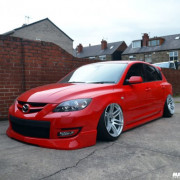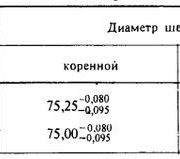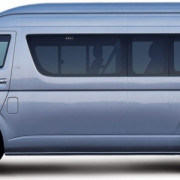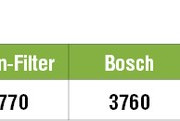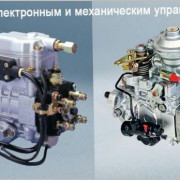Rb-двигатель от nissan: модель, характеристика, особенности работы, плюсы и минусы эксплуатации
Содержание:
- RB26DETT N1 (доработанный 2.6L I6 TT)
- RB25
- Nissan RB20DE engine tuning
- Conclusion
- Nissan RB20DET Engine Swaps
- Неисправности и ремонт
- Nissan RB25DE engine tuning
- Тюнинг двигателя Nissan RB20DET
- Nissan RB20DET Tuning & Upgrades
- Двигатель RB20DE устанавливается на автомобили:
- Nissan RB20DET Engine Specifications & Variations
- Проблемы
- Технические характеристики
RB26DETT N1 (доработанный 2.6L I6 TT)
RB26DETT N1 — это модифицированная версия двигателя RB26DETT, разработанная Nismo (Nissan Motorsports) для автоспорта Группы A и Группы N. Nismo обнаружил, что стандартный двигатель RB26DETT требовал слишком большого обслуживания для использования в гоночных автомобилях Группы-A или Группы-N, и впоследствии разработал блок N1. Впервые это было использовано в Батерсте, Австралия. Nismo сбалансировал коленчатый вал в соответствии с более высокими техническими характеристиками, чем стандартный, поскольку стандартный двигатель RB26DETT испытывает вибрации между 7000 и 8000 об / мин. Двигатель также получил улучшенные водяные и масляные каналы в блоке цилиндров. Поршни и верхние поршневые кольца также были увеличены до 1,2 мм (0,047 дюйма). У двигателя N1 также модернизированы распредвалы и модернизированные турбокомпрессоры.
Хотя во всех версиях двигателя RB26DETT N1 используются турбокомпрессоры Garrett T25, спецификации турбокомпрессоров изменились в течение 3-х поколений двигателя RB26DETT N1 (R32, R33 и R34). В версиях R32 и R33 использовались турбокомпрессоры с подшипником скольжения T25. В двигателе R34 RB26DETT N1 использовались турбонагнетатели Garrett GT25 (в которых используется набор шариковых подшипников).
Самая большая разница между турбокомпрессорами, используемыми в двигателе N1, и стандартным двигателем RB26DETT заключается в том, что колеса турбины в турбокомпрессоре сделаны из стали, а не из керамики, используемой для стандартных турбокомпрессоров RB26DETT. Керамические турбинные колеса оказались очень ненадежными при использовании на высоких скоростях вращения, вызывающих более высокие центробежные силы (например, когда турбокомпрессоры используются при более высоком давлении наддува, чем штатные). Благодаря достижениям в производственных технологиях, таких как процессы уплотнения и обработки материалов.
В блоке цилиндров Nismo RB26DETT N1 используется отверстие диаметром 86 мм (3,39 дюйма), которое можно просверлить до 87 или 88 мм (3,43 или 3,46 дюйма). Блок N1 имеет идентификационную метку 24U, тогда как стандартный блок RB26DETT имеет метку 05U. Блок RB26DETT N1 совместим со всеми отсеками двигателя GT-R.
RB25
1993 RB25DET с VCT ( NVCS )
1998 NEO RB25DET
RB25DET и Transmssion взяты из R33 Skyline GTST
Двигатель RB25 объемом 2,5 л выпускался в четырех вариантах:
RB25DE
двухкамерный, без турбонаддува, степень сжатия 10: 1
Мощность: 182–203 л.с. (134–149 кВт; 180–200 л.с.) при 6000 об / мин
Крутящий момент: 255 Н · м (188 фунт-футов; 26,0 кг · м) при 4000 об / мин
RB25DET
двухкамерный, с турбонаддувом (T3 Turbo) со степенью сжатия 8,5: 1
Мощность: 245–250 л.с. (183–186 кВт; 248–253 л.с.)
Крутящий момент: 319 Н · м (235 фунт-футов; 32,5 кг · м)
RB25DE NEO
двухкамерный, без турбонаддува, степень сжатия 10: 1
Мощность: 147 кВт (197 л.с., 200 л.с.) при 6000 оборотах в минуту
Крутящий момент: 255 Н · м (188 фунт-футов; 26,0 кг · м) при 4000 об / мин
RB25DET NEO
двухкамерный, с турбонаддувом (T3 Turbo, «45V3» с компрессором OP-6) со степенью сжатия 9: 1
Мощность: 206 кВт (276 л.с., 280 л.с.) при 6400 оборотах в минуту
Крутящий момент: 362 Н · м (267 фунт-футов; 36,9 кг · м) при 3200 об / мин)
Серия двигателей RB25 была впервые представлена в R33 Nissan Skyline GTST. Двигатели RB25DE (без наддува) и DET (с турбонаддувом), выпускаемые с августа 1993 года, также имели систему NVCS (Nissan Variable Cam System) для впускного кулачка. Это дало новому RB25DE больше мощности и крутящего момента на более низких оборотах, чем у предыдущей модели. С 1995 года (двигатели серии 2) и RB25DE, и RB25DET имели обновленную электрическую систему, а турбокомпрессор на RB25DET (S2) имел керамическое колесо турбины, а не алюминиевое. Наиболее очевидным изменением в системе было введение катушек зажигания со встроенными воспламенителями, поэтому катушечный воспламенитель, который был на предыдущих моделях, не использовался. Другими изменениями были другой расходомер воздуха, ЭБУ двигателя , датчик угла распредвала и датчик положения дроссельной заслонки. Механически Серии 1 и Серии 2 очень похожи, единственная механическая разница заключается в распределительных валах, поскольку вал датчика угла поворота кулачка Серии 2, который входит в выпускной кулачок, немного отличается. Ранняя серия 2 имела традиционный Mitsubishi CAS, который позже был заменен на Black CAS из-за того, что иногда ломался фиксирующий зубец.
В мае 1998 года была установлена головка NEO , которая позволила классифицировать двигатель как двигатель с низким уровнем выбросов ( LEV ) из-за более низкого расхода топлива и выбросов. В головке NEO использовались твердые подъемники, а не гидравлические, модернизированные распределительные валы с соленоидом VCT с возможностью включения / выключения, термостат с более высокой температурой 82 ° C (180 ° F), специальные блоки змеевиков и измененный впускной коллектор (диаметр рабочего колеса уменьшен. от 50 до 45 мм (от 2,0 до 1,8 дюйма) для увеличения скорости воздуха и нижнего конечного крутящего момента), в частности, RB25DE NEO, у которого было два впускных отверстия, идущих во впускной коллектор. Камера сгорания в головке меньше, поэтому для компенсации используются шатуны GT-R, а также поршни для конкретных моделей. Турбина получила большую турбину OP6, некоторые из которых поставлялись со стальным компрессором и турбинными колесами, тогда как другие имели компрессорное колесо из нейлонового пластика и керамическое колесо турбины. Некоторые также использовали масляный насос типа N1 и изменили приводную втулку масляного насоса на кривошипе, чтобы помочь справиться с проблемами поломки, связанными с быстрыми высокими оборотами. В общем, это совершенно разные двигатели сами по себе — кульминация 20-летнего опыта производства двигателей Nissan RB в одном лице.
RB25DE без VCT и без турбонаддува был установлен на R32 Skyline, VCT с турбонаддувом и без турбонаддува был установлен на R33 Skylines и WNC34 Stagea . Ранние R34 Skylines используют не- NEO RB, более поздние модели Skyline и Stagea (WGNC34) используют версию NEO.
R32 Skyline RB25DE Длина распредвала 240 ° дюйма, 232 ° выход: 7,8 мм (0,31 дюйма), выход 7,3 мм (0,29 дюйма)
R33 Skyline RB25DE Длина распредвала 240 ° дюйма, 240 ° на выходе: 7,8 мм (0,31 дюйма) на выходе, 7,8 мм (0,31 дюйма) на выходе
RB25DET Длина распредвала 240 ° дюйма, 240 ° на выходе: 7,8 мм (0,31 дюйма) на выходе, 7,8 мм (0,31 дюйма) на выходе
RB25DE NEO Длина распредвала 236 ° дюйма , 232 ° выход : 8,4 мм (0,33 дюйма) дюйма , 6,9 мм (0,27 дюйма)
RB25DET NEO Длина распределительного вала 236 ° дюйма, 232 ° выход: 8,4 мм (0,33 дюйма), выход 8,7 мм (0,34 дюйма)
Nissan RB20DE engine tuning
RB20DET Boost up
Двигатель Nissan YD25DDTi Please note, that N/A tuning of RB20DE and RB20E would be just wasting of time and money, since RB20DET with cheaper mods will be faster. Also you should not try installing turbo kit on RB20DE or RB20E, it is overpriced. The easiest way is to buy RB20DET. And as to RB20DET, it is the most interesting engine with great potential. How to upgrade RB20DET? Stock turbocharger will be the first problem on your way, it is not the best variant for tuning. The maximal safe boost pressure is 11.5 psi (0.8 bar) (sometimes it may be 13 psi (0.9 bar), but unadvisable). On such boost you will gain 260-270 horsepower. To implement it, you should buy RB26DETT fuel injectors, 444 cc/min, and also Skyline GTR intercooler, wastegate, downpipe, 3” straight pipe exhaust system, RB25 MAF or 300ZX Z32 MAF, boost controller, Walbro 255 or GTR fuel pump and also spark plugs. Then you need to adjust all this. On such configuration you will drive quarter mile in mid 13 seconds. To gain 300-320 horsepower, you need 45V4 turbocharger (RB25DET turbo). And also buy Apexi power FC and cold air intake. You may also use HKS GT2530 turbocharger. At 21 psi (1.4-1.5 bar) it may reach about 350 horsepower. These are the safest configurations, which are also quite fast and reliable. How to get 350-400 horsepower? You should just change stock turbocharger for HKS GT2535 or HKS GT2540 and buy camshafts 256/256. To gain 400-450 HP, you need TD06 20G turbocharger, camshafts 264/264, Splitfire ignition coils, Bosch 044 fuel pump, fuel injectors 550 cc or 570 cc (Nissan GTR R35), MLS head gasket and ARP head studs. Having set 17 psi (1.2 bar) pressure, you will obtain 400 HP, and if you increase the boost to 25 psi (1.7-1.8 bar), about 450-470 HP will be gained. With the power like this it will take you low 12 seconds per ¼ mile. In general, for stock internals it is safer and more reliable not to exceed 400 HP. It is possible to reach 500 horsepower also, but it would be too expensive and irrational. Better buy RB25DET or RB26DETT engine.
RB20DET Stroker
For your turbocharger to boost still faster, you may enlarge displacement to 2.33L. 1. Upon enlarging cylinder diameter to 81 mm and purchasing Toyota 4A-GZE pistons, you will gain 2.15L. 2. Having enlarged cylinder diameter to 82 mm and buying Tomei pistons, you will get 2.2L. 3. Keeping stock pistons, but having installed RB25DET crankshaft and connecting rods, your displacement will rise to 2.05L. 4. If you enlarge cylinder diameter to 81 mm (Toyota 4A-GZE pistons), and also install RB25DET crankshaft and connecting rods, displacement will be 2.2L. 5. Having purchased RB26DETT crankshaft and connecting rods, keeping old stock pistons along with this, you will have 2.1L engine displacement. 6. RB26DETT crankshaft and connecting rods + 4A-GZE pistons will give you 2.3L displacement. 7. If you enlarge cylinder diameter to 82 mm (Tomei pistons) and also purchase RB26DETT crankshaft and connecting rods, displacement will rise to 2.33L.
Conclusion
There’s a huge selection of engines out there to choose from when it comes to deciding on the perfect candidate for choosing your next car or engine swap.
Although the RB20DET isn’t the most incredible engine on the planet, it still ticks many of the right boxes for those who are after some reasonably-priced fun.
In our opinion, it’s superior to CA18DET, capable of matching the SR20DET, and even a worthwhile consideration against the RB25DET with reasonable power targets in mind.
For those of you with goals beyond 400hp, you’ll most likely be better off starting with a more substantial base engine that won’t need such extensive modification to reach your goals.
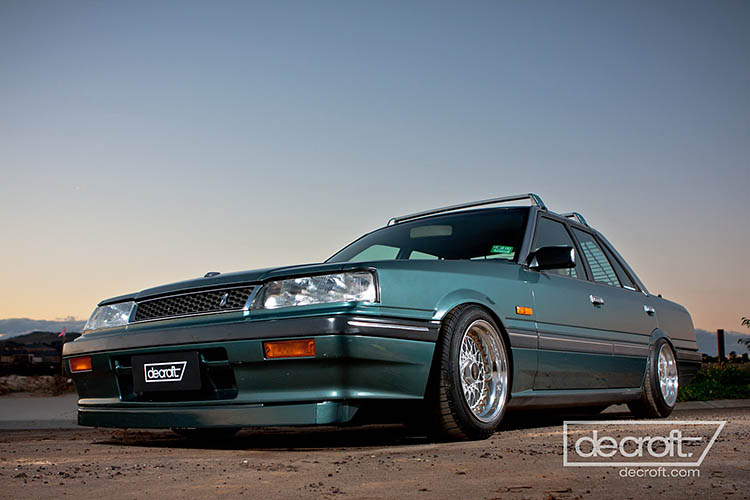
Although the initial outlay will likely be higher, we’re willing to bet it’ll be the better choice in the long run.
Its six-cylinder soundtrack is likely to provide the perfect harmony for your ears, and it’ll be capable of putting a massive smile on your face when you head to the track or the twisties.
Although some enthusiasts will claim that they’re overweight, lack torque, and don’t have enough power, you can’t keep everyone happy.
So, use your personal feelings to decide whether RB20DET is the right choice for you, rather than worrying about other people’s opinions.
Personalization is the beauty of the tuning scene. If it ticks the right boxes for your needs, then we’re sure the RB20DET won’t leave you disappointed.
We hope that we’ve covered everything you could want to know about Nissan’s RB20DET in this guide.
Thank you for reading our Nissan RB20DET guide.
If you enjoyed this article, then please share it with the buttons at the side and bottom of your screen. If you’ve found this information useful, then please take a moment to share it with other Nissan and RB enthusiasts. We appreciate your support.
Nissan RB20DET Engine Swaps
Since the RB20DET can often provide excellent value for money as an engine swap, enthusiasts across the world have jumped at the opportunity to replace their disappointing OEM engines with the RB20.
One of the most common swaps is for the 240SX, where most owners are keen to get rid of the lackluster KA24DE engine that the USDM models received.
So much so that there are various off-the-shelf conversion parts available, such as 240SX RB20 steel and aluminium driveshafts and RB swap mounts.
Alongside the RB20DET, the CA18DET and SR20DET are two popular alternative upgrade considerations for 240SX owners.
Are you considering an RB swap on your 240SX? You’ll want to check out this video:
The 240SX isn’t the only popular Nissan choice for the swap either, with the 240Z and 280Z also being popular choices.
It doesn’t stop there either, with Miata owners always keen to cause an upset, they’ve taken advantage of the RB20’s opportunities.
And it’s even an ideal choice when it comes to old-school JDM Toyota’s, too:
And it’s even found its way into some less-likely European drift cars:
Put it this way, we’ve seen the RB20DET swapped into just about everything, from Volvo’s to Ford pick-ups.
So, if you’re wondering whether it’s the ideal swap for your ride, take a look at YouTube or Google; the chances are that someone may have already fitted an RB into the chassis in question and may be able to offer some helpful advice.
Неисправности и ремонт
Технические характеристики двигателя тойота 3s fse Двигатель RB20 достаточно надёжный, но и у него имеется ряд проблем, которых не избежать. Рассмотрим, основные неисправности, которые возникают в процессе эксплуатации мотора:
Ремонт ГБЦ RB20.
- Потеря мощности, нестабильный холостой ход. Это значит, что пора заменить ремень ГРМ, которая растянулась.
- Плавают обороты. Значит, засорена дроссельная заслонка, и необходимо провести чистку.
- Жор моторного масла. Стоит проверить наличие подтёков и подкинуть маслосъёмные кольца.
- Свист ремня генератора, который необходимо сменить.
- Как видно, глобальных проблем мотор не имеет, а поэтому может считаться надёжным силовым агрегатом.
Nissan RB25DE engine tuning
RB25DET Boost up
You should immediately forget of naturally aspirated tuning RB25DE or installing turbo kit on RB25DE. It is expensive, takes long time and has no sense. You will just waste your money. It is much easier, more reliable, quicker and cheaper to purchase RB25DET, and you will gain much power at once. As to increasing the boost on stock RB25DET turbocharger, their limit is just 11.5-13 psi (0.8-0.9 bar). To make your car driving at 13 psi (0.9 bar), you need to buy 3 inch performance exhaust system, GTR front intercooler, Apexi power intake, Z32 MAF, boost controller, new spark plugs and new water pump. And also purchase GTR N1 oil pump, oil cooler, Walbro 255 lph fuel pump, Apexi Power FC (or other aftermarket ECU). With these performance parts you will gain about 300 WHP. It will let you driving 1/4 miles for mid 13 seconds. Certainly, 300HP is not what you expect from the legendary engine, so we go on. Wishing to gain 350+ WHP, we should upgrade the previous variant. Your stock turbocharger will not promote much power, therefore you need HKS GT2835 turbocharger. Also buy fuel injectors 550 cc/min, fuel pressure regulator, Splitfire ignition coils and 3-layer radiator. Thanks to these upgrades, it will be enough to set boost pressure at 15 psi (1 bar) to gain 340 WHP. And if the boost is increased to 22 psi (1.5 bar), you will get about 400 horsepower on the wheels. Still not enough? In this case you need GT3540 turbocharger, and also camshafts 256/256, valve springs and fuel injectors 750 cc/min. With these mods you will obtain 400 WHP at 15 psi (1 bar). Turbocharger like this lets driving quarter mile per high 11 seconds. The main is, that you can do all this using stock pistons. Moreover, RB25DET stock internals will bear even 500 horsepower, and if you use water methanol injection kit, then even more than 500 HP. But to be sure in reliability of your engine, it is worth buying GTR rods, forged pistons, MLS head gasket, ARP studs and make head porting. Upon this more than 500-600 horsepower will be available. However, if the power is too high, cracks may appear on RB25DET cylinder block. Besides the described above, sometimes RB26DETT head is installed on RB25DET. Also stroker kit may be used, then displacement will reach 2.8-2.9L. Some owners apply RB26DETT crank, RB26DETT pistons and 1.2 mm head gasket. It will make compression ratio 8.7 and increase displacement to 2.6L. Using 1.5 mm head gasket will diminish compression ratio to 8.4. For everything to work properly, you should close the port to NVCS system. All these performance mods are too expensive, complicated and irrational. If you wish really impressive power, then better buy RB26DETT engine.
Тюнинг двигателя Nissan RB20DET
RB20DET Буст ап
Стоит сразу заметить, что тюнинг RB20DE и RB20E, путем установки распредвалов и прочих деталей, это пустая трата времени и денег, RB20DET с буст апом будет всегда впереди за меньшие деньги. Также не стоит пытаться турбировать RB20DE, проще сразу купить контрактный RB20DET.
В итоге, остается самый совершенный RB20DET, его и стоит немного раздуть. Проблема в том, что стоковый турбокомпрессор не самый лучший вариант для тюнинга, максимальный безопасный наддув это 0.8 бар (изредка можно, но не желательно, 0.9 бар), что даст около 260-270 л.с. (моторных). Для этого вам нужно купить форсунки от RB26DETT 444 cc/min, а также интеркулер от Skyline GTR, вестгейт, даунпайп, прямоточный выхлоп на 76 мм трубе, маф RB25 или 300ZX, бустконтроллер, насос Walbro 255 или от GTR, а также свечи. Настраивайтесь и вы проедите четверть мили за средние 13 сек.
Заменив турбину на 45V4 от RB25DET (Skyline R34), купив Apexi power FC и холодный впуск, можно увеличить мощность до моторных 300-320 л.с. Как вариант можно использовать турбину HKS GT2530, на давлении 1.4-1.5 бар она покажет около 350 л.с. Это две наиболее оптимальных, быстрых и надежных конфигураций. Также можно использовать HKS GT2535 или HKS GT2540, с распредвалами 256/256, что позволит снять 350-400 л.с.
Установив турбину TD06 20G, распредвалы 264/264, катушки Splitfire, насос Bosch 044, форсунки Nissan GTR R35 570 сс, металлическую прокладку ГБЦ, ARP шпильки, можно надуть 1.2 бара и получить 400 л.с. Увеличив давление до 1.7-1.8 бар, получите около 450-470 л.с. и проедите квотер за низкие 12 сек. Вообще лучше больше 400 л.с. на сток поршнях не надувать, так безопасней и надежней. Двигаться дальше, за 450-500 л.с. и более, нет смысла, слишком много доработок, проще купить двигатель RB25DET или RB26DETT.
Как вариант можно плюнуть на все и купить дешевый китайский турбо кит для RB20DET, надуть такие же 350 л.с., но, скорей всего, он очень скоро придет в негодность.
RB20DET Строкер
Для данного двигателя есть варианты увеличения рабочего объема с 2.05 л. до 2.33 литра. Расточив блок цилиндров до 81 мм, под поршень Toyota 4A-GZE, вы получите 2.15 л. Расточив до 82 мм, под поршни Tomei — получаете 2.2 литра. Оставив цилиндры стандартные, но установив коленвал и шатуны от RB25DET, объем увеличится до 2.05 л. Добавив поршни 4A-GZE, получите 2.2 литра. Купив коленвал и шатуны RB26DETT, при этом оставив цилиндры в стоке, мотор будет 2.1 литровым. Добавив поршни 4A-GZE, на выходе будет 2.3 литра. Если вместо тойотовских поршней использовать Tomei 82 мм, то получите 2.33 л.
РЕЙТИНГ ДВИГАТЕЛЯ: 5-
<<�НАЗАД
Nissan RB20DET Tuning & Upgrades
One of the main benefits of the RB20DET is the potential tuning capabilities that it has to offer.
Sure, it’s not going to break any records in stock form, but let’s face it, who opts for an RB engine to keep it stock?
When fully tuned, we’ve seen the RB20DET frequently reach up to 400bhp, with several others claiming to have achieved up to 450bhp, which we expect to be the limit on stock internals at around 1.2 bar of boost.
One of the main downsides of the RB20DET that you’ll soon realize is that it somewhat lacks torque compared to some of its rivals at around the 4,500rpm range.
Most tuning enthusiasts overcome this with the usual supporting mods, alongside a larger turbo and uprated camshafts, which help to eliminate the issue with low-end torque.
If you’re looking for a cheaper alternative, then a camshaft upgrade on the stock turbo can also be a consideration.
Although some engines such as the 2JZ-GE are capable of being N/A-T’d by simply bolting on a turbo and expecting the same results, this isn’t the case with the naturally-aspirated RB20 engines.
For that reason, f you’re planning on a turbocharged RB, then you’ll make life far easier by opting for the DET engines from the very start rather than trying to upgrade them later.
There are a lot of different ways that you can go about reaching the tuning potential of the RB20DET, but as always, it’s crucial to start with a healthy base engine, especially for drifting or significant power goals.
The obvious start to tuning any engine is to have it breathing to its full potential, which means starting with simple bolt-on mods, such as a cold air intake, along with upgrading the exhaust system, along with the headers/manifold if you’re chasing decent power.
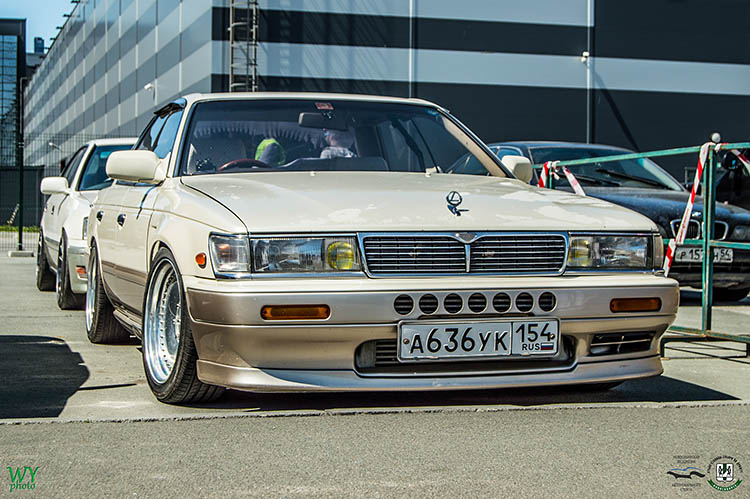
We’d usually opt for the typical 2.5-3” diameter exhaust, which is the usual size for a free-flowing aftermarket exhaust, and there’ll be plenty of choices on the market for most models.
Installing these will eliminate most of the restrictions within the stock setup, enabling a nice, free-flowing exhaust, alongside getting the RB’s vocal cords flowing a little better.
From there, you can increase the airflow into the engine with an aftermarket front-mount intercooler. Other convenient upgrades include injectors, MAF, an uprated fuel pump, and a boost controller.
Once you reach this point, you should be achieving around 320-330bhp.
We’d recommend having your boost controller set up by a reputable tuner or taking a look at aftermarket or piggyback ECU options if you’re planning on going further in the quest for additional power.
From there, it’s time to consider upgrading the T28 turbo, which is where you’ll be able to unlock the true potential and continue venturing towards the 400-450bhp benchmark.
There are several options to consider when it comes to optimal turbos for the RB20DET, and if you’d like to stick with a simple setup, then the manufacturers of the stock turbo, Garrett, offer options such as the GT2860RS.
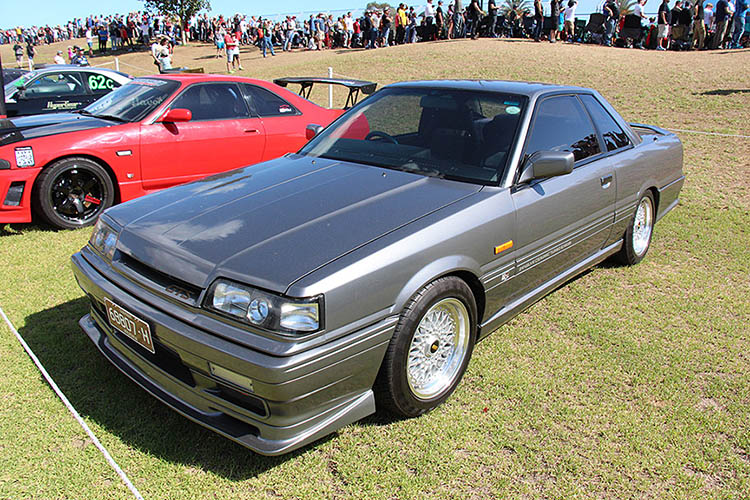
Alternatively, there’s the HKS GT-RS Turbo, which is capable of around 350hp on a quick-spool, responsive setup, which would be perfect for street use.
If you’re looking for immense power gains, then the Garrett GT3071R is an excellent match for the RB20DET.
Given the engine’s lack of low-down torque, a laggy turbo isn’t going to be an ideal combination, and with the GT3071R rated to up to 480hp, it’ll be a perfect option to reach over 400hp.
Although it can be tempting to crank up the boost as much as possible, we don’t recommend going over 0.8 bar (11.5 psi) on stock internals, but with a forged setup, some have managed to exceed 1.2 bar (approx. 17.5 psi.)
Of course, the higher you go on boost, the more you’re risking the reliability of the engine.
Once you’ve decided on a turbo, you’ll need to look at multi-layer steel head gaskets, uprated head studs, and uprated camshafts. We highly recommend the TOMEI PROCAM upgrade.
There’s also the option to go with an aftermarket oil pump, connecting rods, pistons, valve spring kits, and a ported and polished head.
If you’ve opted to go full-retard with a 400hp+ setup, but you’re suffering from turbo lag, it’s time to consider increasing the displacement, which you can grow to up to 2.4L with a forged 2.4L RB24 stroker kit.
Unfortunately, by this point, you’ll need to be prepared to have your pockets leaking like a sieve. So, be warned, as you may end up wishing that you’d opted for an alternative swap from the start.
Двигатель RB20DE устанавливается на автомобили:
Nissan Cefiro
Nissan Cefiro
(05.1992 — 07.1994)
2-й рестайлинг, седан, 1 поколение, A31
Nissan Cefiro
(08.1990 — 04.1992)
рестайлинг, седан, 1 поколение, A31
Nissan Cefiro
(09.1988 — 07.1990)
седан, 1 поколение, A31
Nissan Laurel
Nissan Laurel
(08.1999 — 12.2002)
рестайлинг, седан, 8 поколение, C35
Nissan Laurel
(06.1997 — 07.1999)
седан, 8 поколение, C35
Nissan Laurel
(01.1993 — 08.1994)
седан, 7 поколение, C34
Nissan Laurel
(01.1991 — 12.1992)
рестайлинг, седан, 6 поколение, C33
Nissan Laurel
(12.1988 — 12.1990)
седан, 6 поколение, C33
Nissan Skyline
Nissan Skyline
(08.2000 — 05.2001)
рестайлинг, купе, 10 поколение, R34
Nissan Skyline
(08.2000 — 05.2001)
рестайлинг, седан, 10 поколение, R34
Nissan Skyline
(05.1998 — 07.2000)
седан, 10 поколение, R34
Nissan Skyline
(05.1998 — 07.2000)
купе, 10 поколение, R34
Nissan Skyline
(08.1991 — 07.1993)
рестайлинг, купе, 8 поколение, R32
Nissan Skyline
(08.1991 — 07.1993)
рестайлинг, седан, 8 поколение, R32
Nissan Skyline
(05.1989 — 07.1991)
седан, 8 поколение, R32
Nissan Skyline
(05.1989 — 07.1991)
купе, 8 поколение, R32
Nissan Skyline
(05.1986 — 04.1989)
купе, 7 поколение, R31
Nissan Skyline
(08.1985 — 04.1989)
седан, 7 поколение, R31
Nissan Skyline
(08.1985 — 04.1989)
седан, 7 поколение, R31
Nissan Stagea
Nissan Stagea
(08.1998 — 09.2001)
рестайлинг, универсал, 1 поколение, WC34
Nissan Stagea
(09.1996 — 07.1998)
универсал, 1 поколение, WC34
Nissan RB20DET Engine Specifications & Variations
The RB20DET’s design builds on its predecessor, the L20A engine, keeping the same stroke and bore of the original.
But, that’s where the similarities between the two end, as Nissan went on to upgrade the pistons, connecting rods, camshaft, cylinder head gasket, and the ECU, with the compression ratio reduced to 8.5:1.
With a displacement of 1,998 centimeters and an inline six-cylinder configuration, a Garrett ball-bearing T28 turbocharger combined with a T3 exhaust manifold enabled up to 10 PSI.
There were two main variations of the RB20DET produced, the red top and the silver top; although the red top is rare to find in the states, it features in pre-1988 engines in Australia and New Zealand.
Replacements between the two variants were a new cylinder head, an uprated turbocharger, pistons, connecting rods, camshafts, and also an updated cylinder head gasket.
The red top was only capable of producing up to 190 hp, so it’s typically the less desirable choice of the two options.
Nissan RB20DET specifications:
- Cylinder block: Cast-iron
- Cylinder head: Cast-iron
- Configuration: Inline straight-six
- Valvetrain: DOHC (4 valves)
- Piston stroke: 69.7mm (2.74″)
- Cylinder bore: 78mm (3.07″)
- Compression ratio: 8.5:1
- Displacement: 2.0L (1,998 cc)
- Stock power: 212 bhp (at 6,400 rpm)
- Stock torque: 195lb/ft (at 3,200 rpm)
- Weight: 245kg (540lb)
- Stock turbo: Garrett T28 w/ T3 flange
- Maximum tuning potential (with extensive modifications): 450+ hp
We’ve written a separate guide where we take a deeper dive into the RB20DET engine specifications.
In total, Nissan went on to produce seven different models of the RB20-family:
- RB20E
- RB20ET
- RB20DE
- RB20DET
- RB20P
- RB20DET-R
- RB20DE NEO
Проблемы
Вся серия RB, в том числе и двигатели RB25DE, надежна. Эти силовые установки лишены серьезных конструктивных и технологических просчетов, которые бы приводили к расколу блока или другим серьезным проблемам. Данным двигателям присуща проблема с катушками зажигания – они выходят из строя, и тогда мотор троит. Их рекомендуется менять через 100 тысяч километров. Также вся серия RB отличается прожорливостью, поэтому повышенный расход бензина при езде в городе или даже по трассе не должен вызывать удивления у владельца.
Остальные проблемы в виде течи масла или его угара являются типичными и характерны всем ДВС. По большей части они связаны с естественным старением.
Технические характеристики
Принцип работы роторного двигателя: плюсы и минусы Двигатель RB20 является последователем серии Ниссан RB. Первое поколение — это рядная шестёрка с короткоходным коленчатым валом, закрытым в чугунном блоке. Сверху, мотор получил одновальную головку с алюминия.
Двигатель RB20 в автомобиле.
Второе поколение было доработано и получило двухвальную головку на 24 клапана. Были также заменены почти все компоненты — коленвал, шатуны, поршни, впускная система, блок управления. Распредвалы 232/240, подъем 7.3/7.8 мм.
Рассмотрим, основные технические характеристики силового агрегата:
Двигатель RB20 в подкапотном пространстве.
| Наименование | Характеристика |
| Производитель | Yokohama Plant |
| Марка | RB20/ M4R |
| Маркировка | 2.0 литра или 1998 см. куб |
| Тип | Инжектор |
| Мощность | 115/5600 125/5600 130/5600 145/6000 150/6400 155/6400 165/6400 170/6000 180/6400 190/6400 215/6400 |
| Крутящий момент | 167/4000 172/4400 181/4000 206/3200 181/5200 184/5200 186/5600 216/3200 226/3600 240/4800 265/3200 |
| Топливо | Бензин |
| Клапанный механизм | 8-24 клапанный |
| Количество цилиндров | 6 |
| Расход горючего | 6.4 литров |
| Диаметр поршня | 78 мм |
| Применяемое масло | 0W-30 5W-30 5W-40 10W-30 10W-40 |
| Экологическая норма | Евро-4 |
| Ресурс | 400+ тыс. км |
| Устанавливался на: | Nissan Fairlady Z Nissan Skyline Nissan Stagea Nissan Cefiro Nissan Crew Nissan Laurel Holden Commodore |
